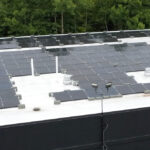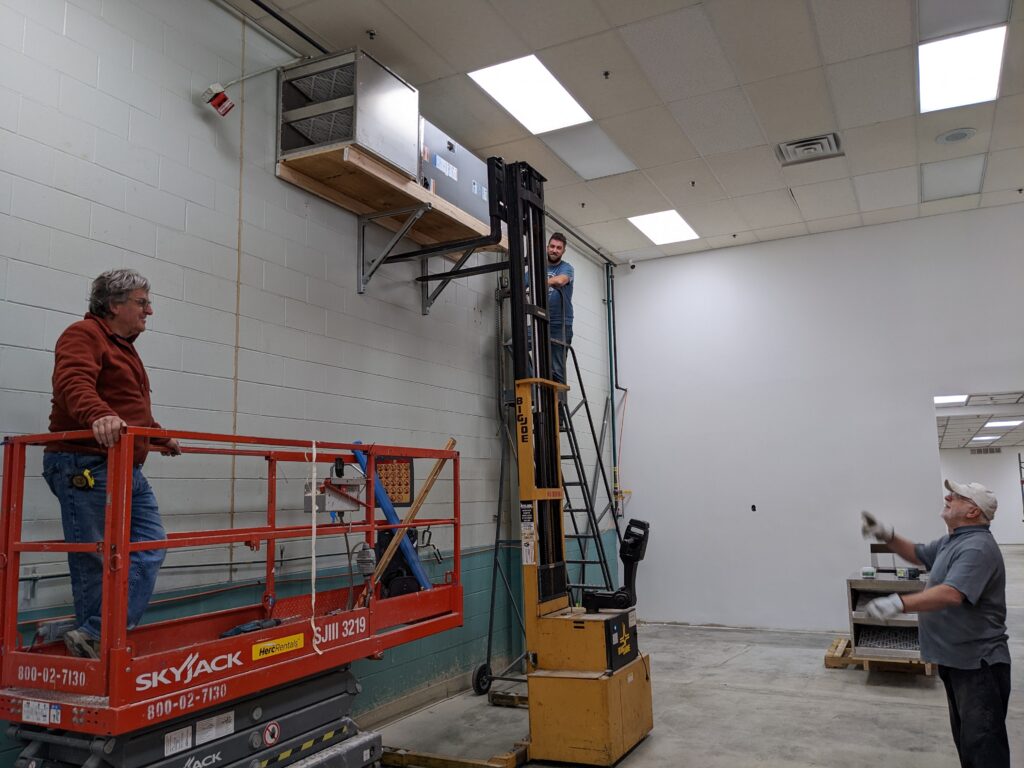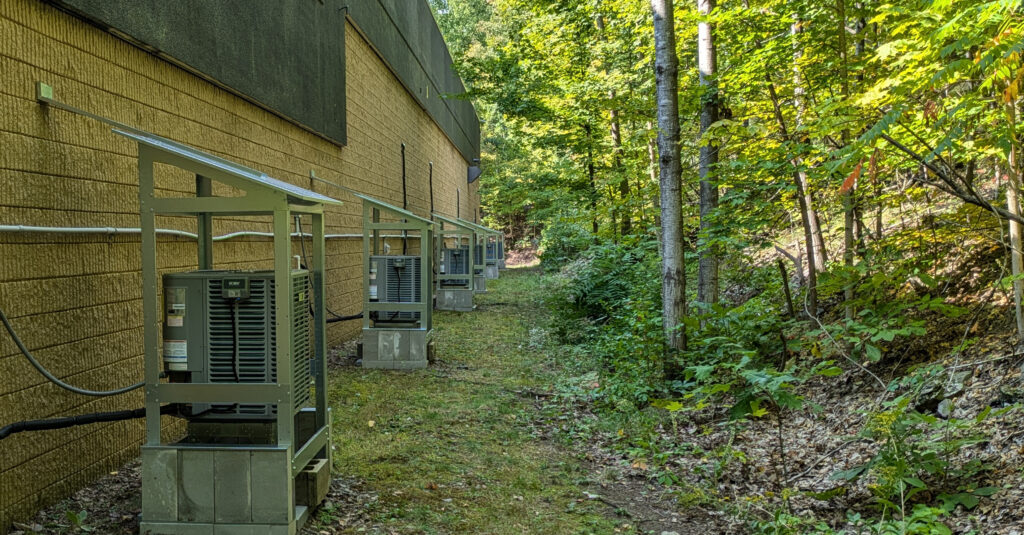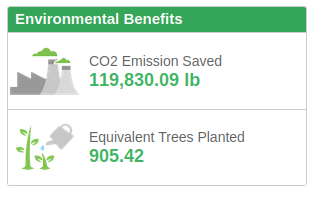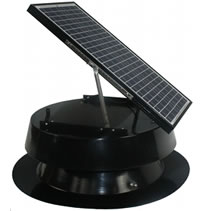We are always looking for ways to minimize our carbon and environmental footprint, and we found a big one at our warehouse in New York State.
Prior to purchasing the warehouse it was heated with furnaces fed by large propane storage tanks on the property. There was no cooling. Heating large spaces in a cold climate is very energy intensive. If we wanted to add cooling, our energy costs would be headed in the wrong direction.
Stage 1: Problem Analysis & Potential Solutions
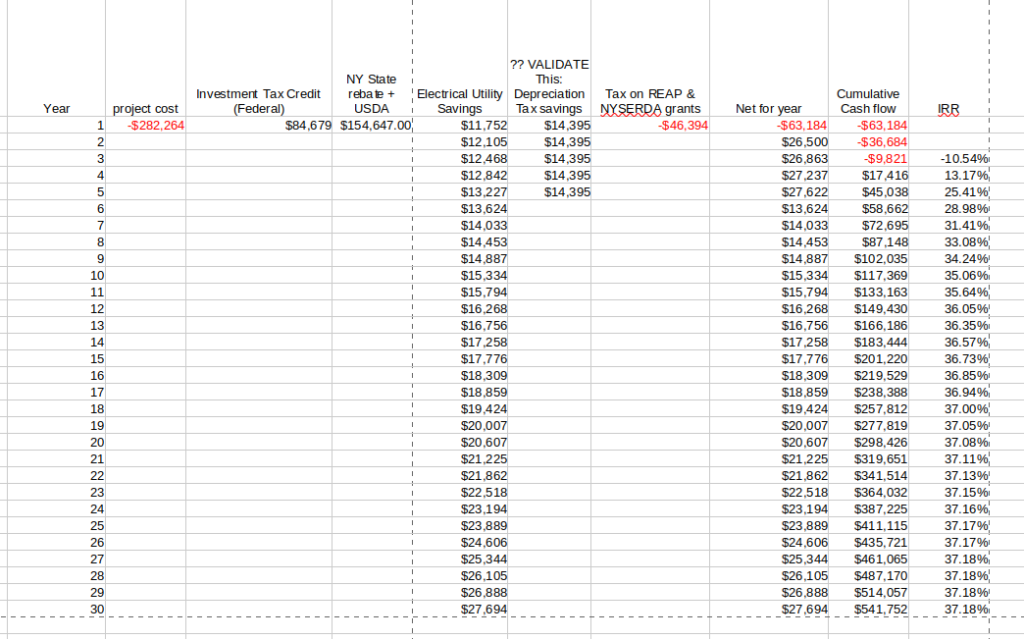
Propane is one of the more expensive fuels out there, since it has to be delivered by truck. The goal was to use electricity and going down that path led us to heat pumps (hey we sell them !) and we did the math on making our own electricity. Solar panels are relatively inexpensive and have an excellent ROI (return on investment).
We adopted a multi stage plan to first reduce our carbon footprint and then make sure our costs were equal to less than the “fossil approach”.
Stage 2: Install Heat Pumps
Stage 3: Get a New Roof
It makes sense to get a new roof, when you’re installing 30 year lifetime solar panels. Thank You to the folks at S.D. Carruthers Roofing for doing a great job on the roof and adding an extra layer of high R-value polyisocyanurate insulation underneath.
Stage 4: Get Solar
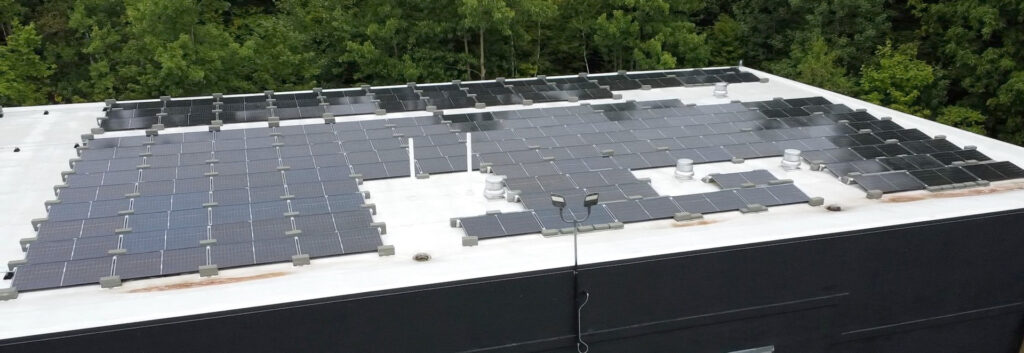
Once we finalized our requirements and got approval from the utility, the 120 kW of solar panels went in.
Conclusions:
- CO₂ avoided
- Solar electric is about as “home grown” as it gets. Although one may argue about the embodied energy in producing the panels, there will be 20-30 years of no carbon from our warehouse operations. The box shows our first 8 months of CO₂ saved.
- Indoor Air Quality
- Warehouses suffer from dust from cardboard operations. Our own filter boxes were installed on each air handler to allow for good filtration (MERV13) and long intervals between filter changes (6 months)
- Comfort
- Heating performance with the heat pumps has been as good as the propane furnaces.
- Since we added cooling (free with heat pumps), summer comfort has been much improved.
- Cost Savings
- Great ROI on the system.
- Zero electrical costs for 6-8 months, with dramatically lower bills anticipated for winter
Acknowledgements
Genie Solar: Great job at offering options and providing guidance on incentives.
3rd Roc Solar: Great install and responsive to any issues.
USDA: Thank You very much for the REAP grant.
Peter Caldwell (Great Electrician)
Thomas Brunet (Consultant)
Technical Notes:
Demand Charges: Although we will make enough electricity from the solar panels for our needs, commercial electrical rates include something called demand charges. We have had to distribute our electrical usage over a 24 hour period to avoid much of this. In particular, we actually heat at night to avoid turning on all our heat pumps simultaneously.
More information: If you would like to explore your path to “energy indepence” please contact me at www.hvacquick.com (ask for Neil Smith)
